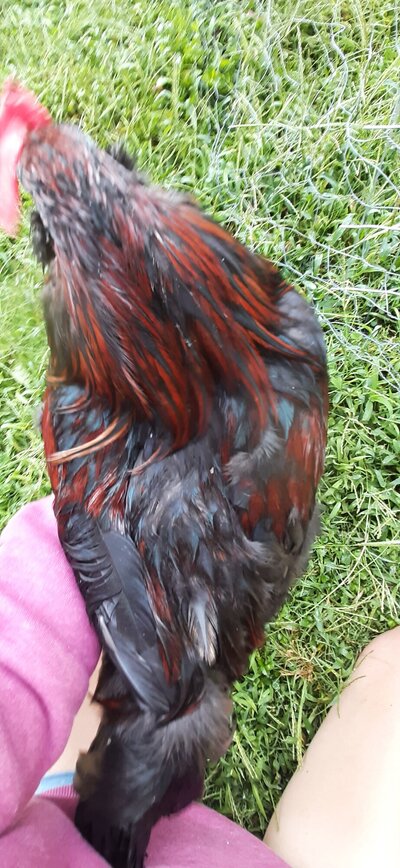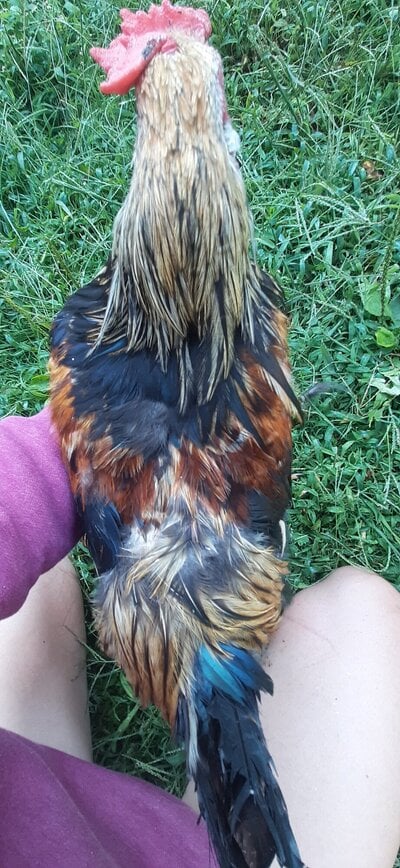SpringhouseFarm
Chirping
I'm really interested in feather color genetics but have limited knowledge of it & would love to learn. I have Whiting True Blues that I'll be breeding & I have 3 roosters that I'm trying to decide on who to keep & who to cull based on which will give us the most variety of feather color in offspring, that's one of our main focuses for our breeding program, as well as breeding for muffs & beards & layers of bright sky blue eggs. First picture is of our biggest bodied black rooster with red in his hackle & saddle feathers as well as on his wings & he has muffs & beard. Second rooster has wild type feathering. Third rooster is blue with mahogany leakage. As for our hens, we have a black with muffs/beard, blue, splash, & a blue with mahogany leakage similar to our rooster with muffs/beard. So my question is which rooster would give us the most color variety of offspring? I don’t want to end up just having black, blue & splash chicks, especially since our hens are already those colors. What are the names of each roo's coloring & what colored offspring would they most likely produce with the hen colors I have? I was thinking the blue with mahogany rooster with our similar hen would be interesting to see if we can get more chicks like that since they are very pretty. The black would be good for continuing the muffs/beards. I was wondering if using the wild type roo would guarantee more color variety? Sorry for all the questions just don't want to get rid of the wrong rooster, but I don't want to necessarily keep all 3 lol Thanks for any insight anyone can provide!









 So does BBS & typical feather color genetics not even apply to them then?
So does BBS & typical feather color genetics not even apply to them then?